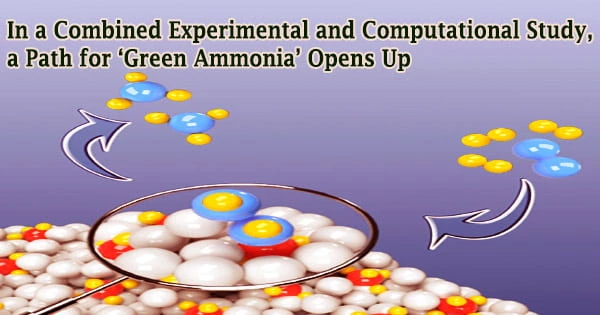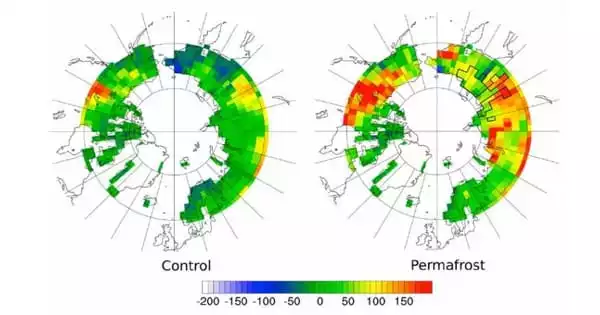Ammonia is a chemical compound made up of three hydrogen atoms connected to one central nitrogen atom. Both are relatively common elements; nitrogen makes up the majority of the Earth’s atmosphere, and hydrogen is the most plentiful element in the universe.
Ammonia production is estimated to be around 200 megatons per year. This makes it the world’s second-most-produced chemical, after only sulphuric acid. Although there are various ways to make ammonia, the Haber-Bosch method is the most common, accounting for about 90% of overall output.
Ammonia is an extremely stinky gas having a boiling point of -33.3 °C (-28.0 °F) at atmospheric pressure. It’s relatively easy to liquefy when kept cold or under a small amount of pressure, making it a far easier green fuel to transport and store than hydrogen.
In any case, Haber-Bosch and other industrial-scale manufacturing methods necessitate high temperatures (above 400°C) and high pressures (more than 150 bar). To break the strong bonds in nitrogen and react with hydrogen to generate ammonia, certain conditions are required (NH3).
These processes, which account for about 1% of world energy use, rely mostly on fossil fuels. As a result, ammonia is the most greenhouse gas-intensive chemical process on the planet, accounting for nearly 5% of total world CO2 emissions.
Furthermore, ammonia demand is predicted to rise in the coming years, owing to its use in synthetic fertilizers required to feed a growing worldwide population.
“One of the major challenges on the climate front, and the energy and food front, is the production of ammonia. Today it is made in some of the largest factories in the world. The only really efficient way to make ammonia is under high temperatures and high pressure and using a carbon-based feedstock,” says Professor Tejs Vegge from DTU Energy and the VILLUM Center for the Science for Sustainable Fuels and Chemicals (V-Sustain). He leads the research along with Professor Ping Chen from the Dalian Institute of Chemical Physics (DICP), Chinese Academy of Sciences.

“Nature is very good at making ammonia at ambient pressure and temperatures in enzymes like nitrogenase. However, the process is very slow and impossible to scale to industrial production,” says Tejs Vegge.
One of the major challenges on the climate front, and the energy and food front, is the production of ammonia. Today it is made in some of the largest factories in the world. The only really efficient way to make ammonia is under high temperatures and high pressure and using a carbon-based feedstock.
Tejs Vegge
Potential game-changer
For decades, scientists have been attempting to develop new and more environmentally friendly methods of producing ammonia. Tejs Vegge and his DTU colleagues, Dr. Jaysree Pan and Associate Professor Heine A. Hansen, have proposed a possible game-changer with a novel family of complex metal hydride catalysts that allowed them to achieve the coveted mild-condition ammonia synthesis in collaboration with the DICP team.
Their technology, they hope, could pave the door for new and more sustainable ammonia production methods. Their findings were reported in the journal Nature Catalysis.
They can make ammonia at temperatures as low as 300°C and pressures as low as 1 bar with their method. The practical application of these catalysts shows promise in terms of small-scale ammonia synthesis using renewable energy. Catalysts working at pressures of roughly 50 bar and temperatures below 400°C would be required in such systems.
“We believe our research stands out in that this new class of catalysts actually lies somewhere between the biological and the industrial processes. It has something from the human, artificial process heterogeneous catalysis and something from what goes on in enzymatic and homogenous catalysis. It is an entirely new way of making ammonia, and we’re using the best of both worlds allowing us to lower the temperature and pressure significantly.”
Indeed, ammonia does a better job of holding hydrogen than hydrogen gas itself, which is renowned for leaking through container metal walls, embrittling steel it comes into touch with, and liquefying at cryogenic temperatures with a lot of energy.
Then there’s density: all other things being equal, one and a half times more hydrogen is in a gallon of ammonia than there is in a gallon of hydrogen.
No false notes
Essentially, their complex metal hydride catalysts (Li4RuH6 and Ba2RuH6) may catalyze the synthesis of ammonia from hydrogen (H2) and nitrogen (N2). Multiple ruthenium hydride complexes (RuH6)4-, which are rich in electrons and hydrogen, are used to reduce nitrogen. Between the center and the nitrogen, the hydrogen carries electrons and protons.
The alkaline metals lithium and barium (Li/Ba) stabilize the chemical intermediates at the same time. The process, on the other hand, is very dynamic, with numerous elements of the complex serving several purposes. It took years to perform the computations alone.
“Everything is different from what we’ve seen before. For example, although ruthenium is a well-known component in ammonia catalysis, it is present in a different form and behaves differently. It is surrounded by hydrogen atoms and forms a hydride complex, allowing it to transfer hydrogen in a novel way. You could picture this catalyst as a symphony orchestra, where every part has to function together to make it work. The fascinating part is that it does work there are no false notes,” says Tejs Vegge.
“Ammonia catalysis is arguably the best-studied catalytic system in the world. To find a truly new mechanism that opens a door into a new world is very satisfying as a scientist. However, it may also open up new possibilities for ammonia production to take place in a less energy-intensive way. The large factories of today are needed to make the production profitable. Our catalysts or similar concepts may enable production in smaller, decentralized factories. This would also cut down on transport, which adds substantially to the price and CO2 emissions of ammonia today.”
















